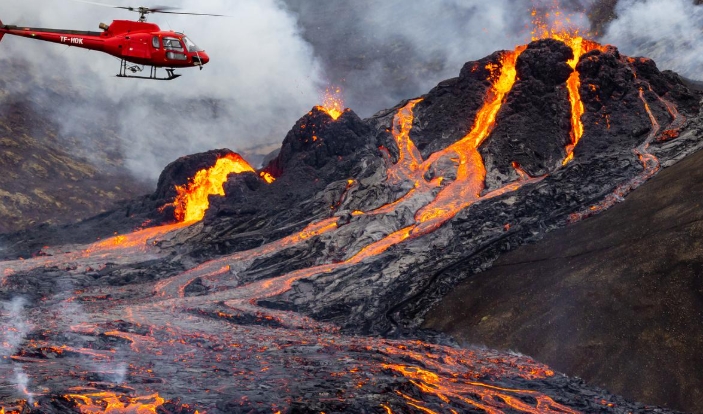Shield volcanoes are massive, broad, and gently sloping volcanic landforms that are found all over the world. They are known for their low, broad profile and are typically formed by the eruption of low-viscosity basaltic magma. But what exactly is the science behind shield volcanoes?
Formation of Shield Volcanoes
Shield volcanoes are formed by the continuous eruption of low-viscosity basaltic lava flows. The lava spreads out over a large area, creating a broad, gently sloping cone-shaped volcano. These eruptions are typically non-explosive, with the lava flowing steadily down the sides of the volcano.
Hotspot Activity
Many shield volcanoes are formed over hotspots, areas where a plume of hot mantle material rises up from deep within the Earth. The heat causes the mantle to melt, creating magma that rises to the surface and forms a volcano. This hotspot activity can create a chain of shield volcanoes over time as the tectonic plate moves over the stationary hotspot.
Gentle Giants
Shield volcanoes are often called “gentle giants” because of their low-angle slopes and relatively calm eruptions. Unlike their explosive counterparts, such as stratovolcanoes, shield volcanoes have a lower risk of catastrophic eruptions. This makes them popular tourist destinations for hiking and sightseeing.
Eruptions and Lava Flows
Although shield volcanoes are known for their non-explosive eruptions, they can still produce lava flows that can travel long distances. These lava flows can be extremely hot and fast-moving, posing a danger to surrounding areas. Scientists closely monitor shield volcanoes to predict and prepare for potential eruptions.
Understanding Earth’s Processes
Studying shield volcanoes helps scientists better understand the inner workings of our planet. By analyzing the composition of the lava, the shape of the volcano, and the geological features of the surrounding area, researchers can learn more about the Earth’s mantle, tectonic plates, and volcanic activity.
In conclusion, shield volcanoes are fascinating geological features that offer a glimpse into the dynamic processes at work within the Earth. Their formation, eruption patterns, and gentle nature make them unique and important subjects of study for geologists and volcanologists. By understanding the science behind shield volcanoes, we can gain valuable insights into the complex workings of our planet.

